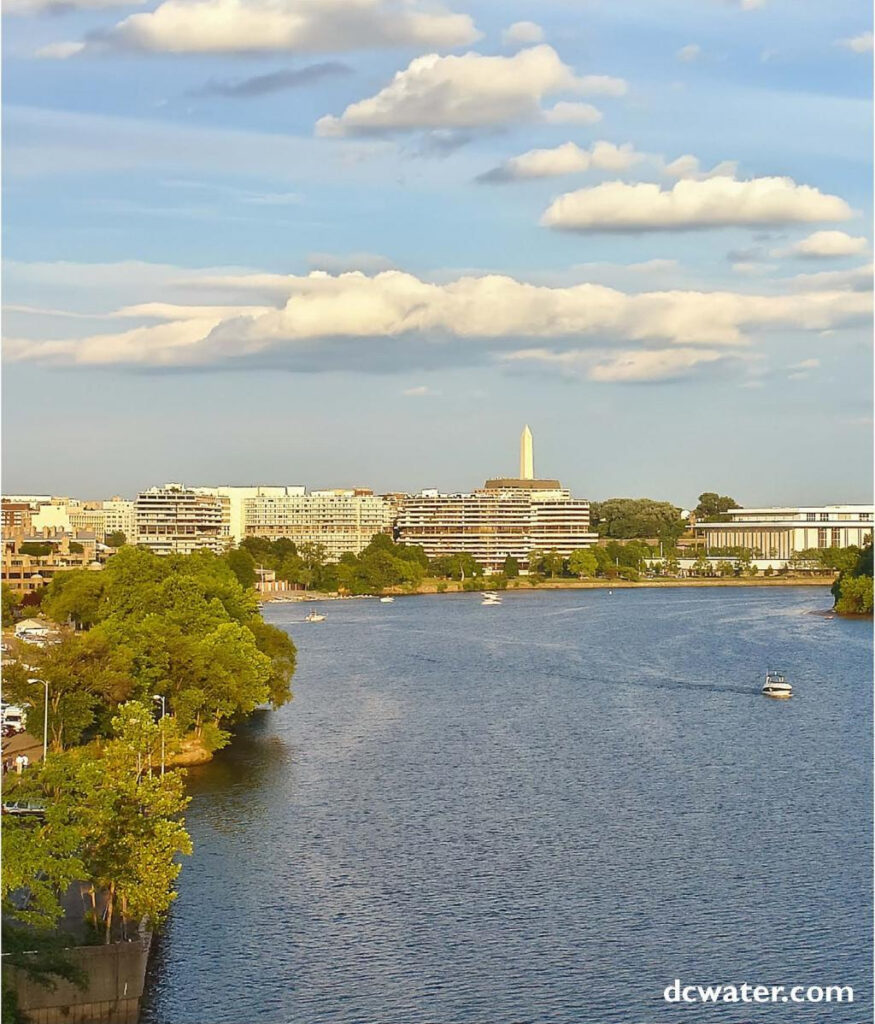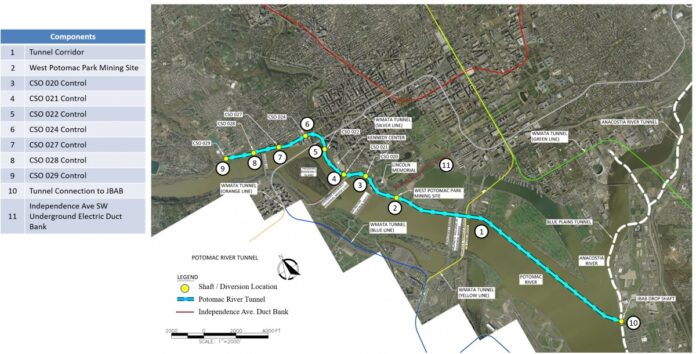The DC Water Board has approved an $819 million design-build contract to build the Potomac River Tunnel.
The agency says in a statement that a joint venture of CBNA and Halmer have been selected “based on its lowest price proposal and second highest technical score, therefore providing the best value.
The 5.5-mile-long tunnel, the largest in the organization’s history, will control combined sewer overflows (CSOs) to the Potomac River, improving water quality in this critical natural resource.

“This work is part of the larger Clean Rivers Project, a $2.99 billion program to improve the water quality of the Anacostia and Potomac rivers and Rock Creek by increasing the capacity of the sewer system,” DC Water says.
“We do not take these decisions lightly,” board chair Tommy Wells said in a statement. “This is a huge investment of ratepayer funds, but one we know will pay great dividends for the District of Columbia, the Potomac River and everyone who lives, works, and plays on this great waterway. It will also help mitigate the growing impacts of climate change on the nation’s capital.”
The 18-foot-diameter tunnel will run deep underground beneath the Georgetown waterfront, along the edge of the National Mall and East Potomac Park, past Hains Point and connect by gravity to the existing Anacostia River Tunnel. Construction will require two tunnel boring machines. Starting from West Potomac Park, one machine will mine south through mostly soft ground, and another machine will head north to bore through rock.
Work on the project is expected to begin in 2024 with completion in early 2030, in accordance with the schedule stipulated in the Consent Decree DC Water signed in 2005 with the U.S. Environmental Protection Agency, the Department of Justice, and the District of Columbia. Once the PRT is operational, it will reduce combined sewer overflows (CSOs) to the Potomac River by 93 percent in an average year of rainfall.
“The Clean Rivers Project is a gamechanger for the District,” said DC Water CEO and general manager David L. Gadis. “We have already seen the impact the completed Anacostia River tunnel system is having on the health of that river, and we expect similar results for the Potomac as a result of this project.”


